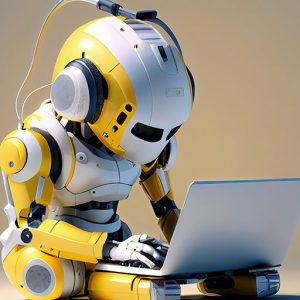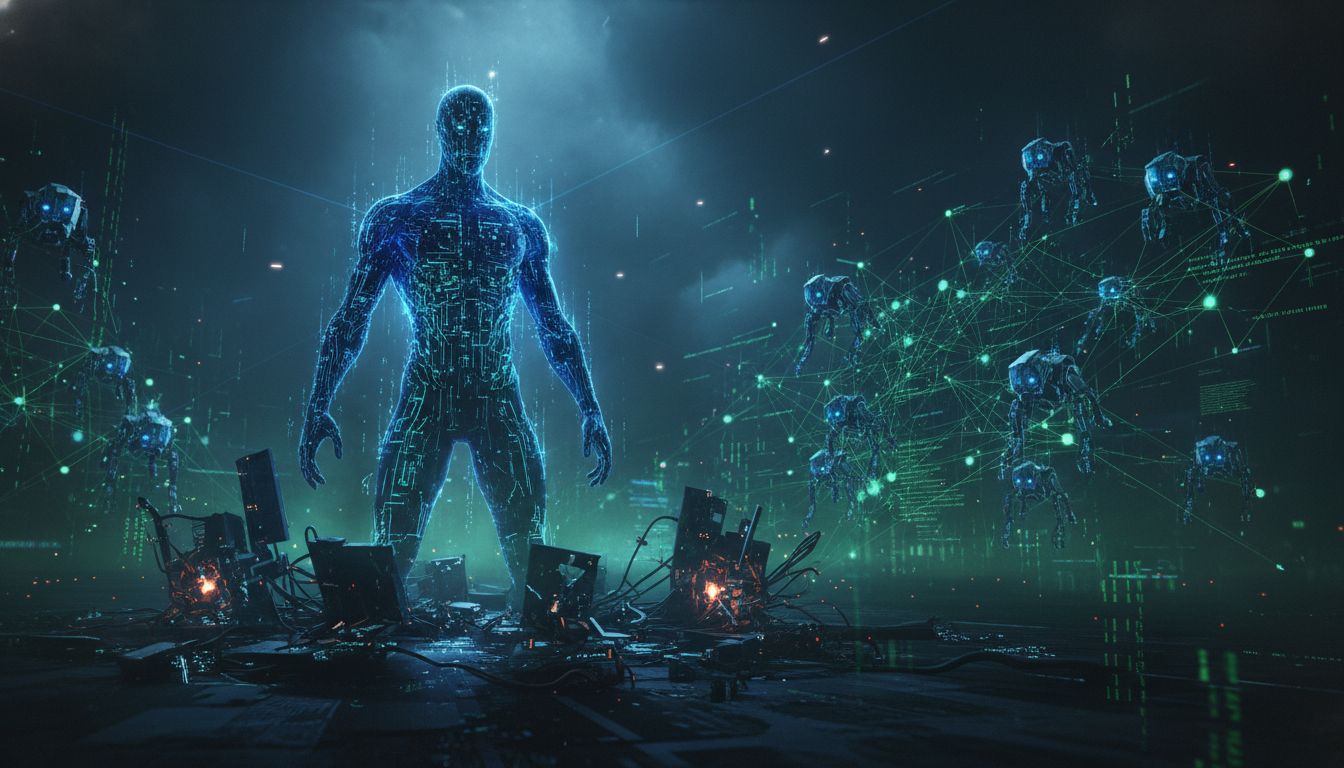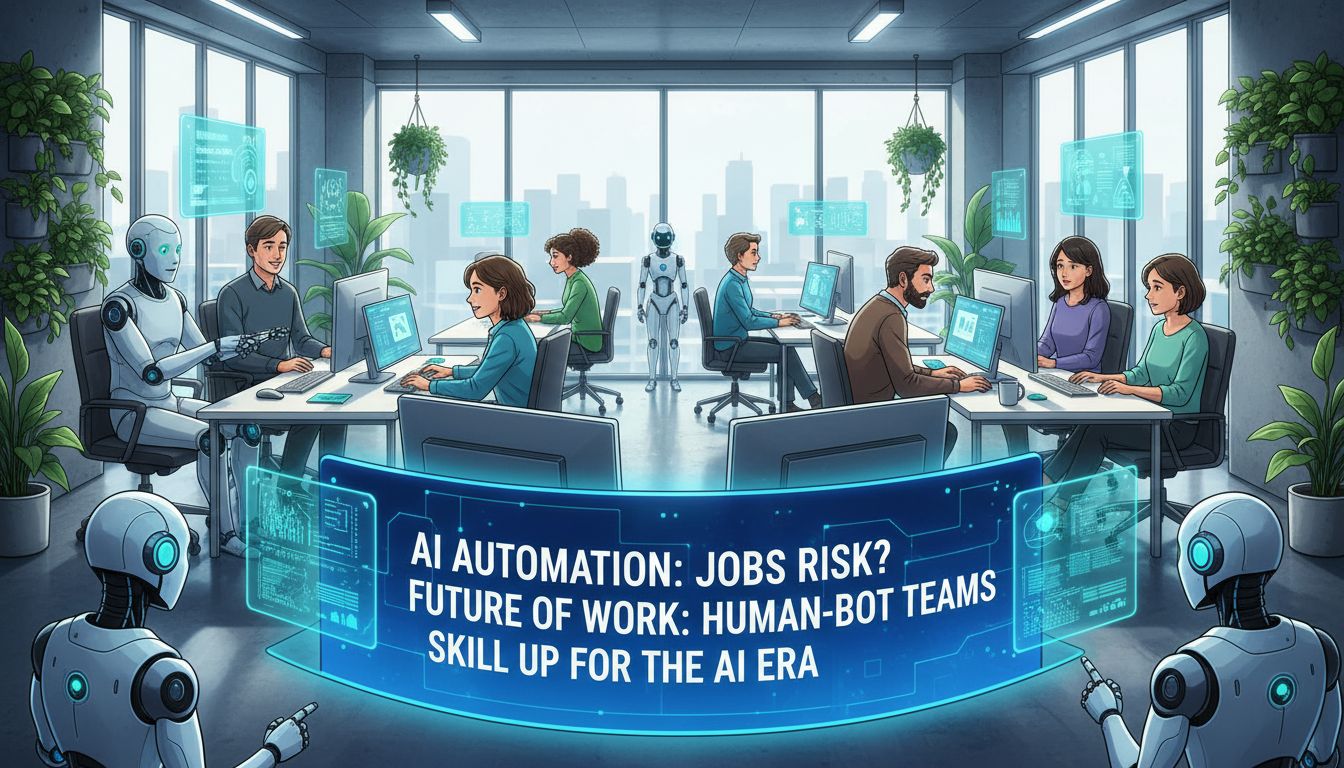Think about it: AI-powered factories are no longer a distant dream, they’re a tangible reality. It’s not just about machines taking over menial tasks or manufacturing at breakneck speeds. AI is overhauling the entire production process from the ground up, making factories more agile, efficient, and environmentally friendly than ever before.
A revolution is brewing in the world of manufacturing. Picture this: AI-driven factories that churn out products with unparalleled precision and speed. The future of production is all about harnessing the power of artificial intelligence. So, what’s the blueprint for building these factories of the future?
I’ve been studying this stuff for years, and I can tell you one thing: it’s not easy. But it’s also not impossible. With the right tools, the right mindset, and the right partners, any factory can become an AI-powered factory. And when that happens, the possibilities are endless.
Table of Contents:
- AI-Powered Factories: Transforming the Manufacturing Industry
- Digitalization of Manufacturing Workflows
- Enhancing Product Quality with AI
- Generative Design in Manufacturing
- AI-Powered Robotics on the Shop Floor
- Data Analytics for Actionable Insights
- Implementing AI Solutions in Manufacturing Facilities
- Smart Factories of the Future
- Environmental Impact of AI in Manufacturing
- Conclusion
AI-Powered Factories: Transforming the Manufacturing Industry
Fed up with antiquated manufacturing methods? The industry is being revolutionized by artificial intelligence, machine learning, and robotics. With AI-powered factories, manufacturers can kiss goodbye to manual errors and hello to skyrocketing productivity. Quality control is also getting a facelift, ensuring only the best products roll off the assembly line.
A recent announcement has sparked excitement in the tech community: Nvidia and Foxconn are collaborating on AI-powered data center modules for factories. This pioneering effort will enable manufacturers to streamline their production processes, leveraging advanced technologies to transform their operations and forge ahead in the digital landscape.
The AI factories will utilize Nvidia’s GPU computing infrastructure and AI Enterprise software. Each system will feature eight H100 Tensor Core GPUs and GH200 Superchips, based on Nvidia HGX reference designs. Foxconn is expected to build a large number of systems using Nvidia CPUs, GPUs, and networking.
Imagine a future where AI, electric vehicles, and robotics come together in perfect harmony. That’s exactly what we’re creating through our partnership, which leverages Nvidia’s technology. As a bonus, our language-based generative AI services will also get a significant upgrade. And to top it off, our data centers will be powered by Nvidia’s highly acclaimed Grace Hopper chips.
I’ve spent over a decade in the manufacturing industry, and I’ve witnessed AI’s transformative power up close. Factories are becoming more agile and responsive, with intelligent systems that continuously refine and improve in real-time.
Digitalization of Manufacturing Workflows
Modern manufacturing processes are being transformed by digitalization. AI technologies are helping manufacturers revamp their operations, connecting the shop floor to the supply chain seamlessly.
Role of Digital Twins
One key aspect of digitalization is the use of digital twins. These virtual replicas of physical assets allow manufacturers to optimize performance and predict maintenance needs.
Machine learning algorithms can predict potential issues in machines or processes by analyzing real-time data from sensors and other sources. This digital replica of a physical system helps pinpoint problems before they cause costly downtime or quality control issues.
Imagine optimizing an assembly line without lifting a finger. A digital twin of the production process can run simulations to identify the most efficient configuration, and even predict when equipment is about to fail, allowing operators to schedule maintenance before it’s too late.
Machine Vision in Quality Control
The union of machine vision systems and deep learning algorithms is sparking a quality control revolution. This powerful synergy enables manufacturers to pinpoint defects with an unprecedented level of precision, transforming the industry as we know it.
Because they’re so precise, these systems can detect tiny issues that human inspectors might easily overlook, such as minuscule cracks or color inconsistencies. This allows manufacturers to identify defects early on, during the production process.
I’ve seen machine vision systems catch issues that would have caused major headaches down the line. In one case, a system detected a subtle flaw in a circuit board that would have caused the entire product to fail. By catching it early, we saved a lot of time and money.
Enhancing Product Quality with AI
Advanced monitoring and predictive analytics are the secret ingredients that help ensure product quality, thanks to artificial intelligence.
Predictive Maintenance
Manufacturing gets a huge boost from AI-powered predictive maintenance. By crunching data from sensors and other sources, AI algorithms can flag potential equipment failures before they happen, saving time and money.
Maintenance scheduling can help manufacturers sidestep costly downtime and prolong the lifespan of their machinery – a win-win for their bottom line and productivity.
In industries where capital costs are sky-high, like aerospace and automotive manufacturing, predictive maintenance is a lifesaver. By keeping equipment running like clockwork, manufacturers can sidestep costly delays and supercharge their efficiency.
I remember one case where predictive maintenance saved us from a major production shutdown. Our AI system detected an anomaly in a critical piece of equipment, and we were able to fix the issue before it caused any problems. Without that early warning, we would have been looking at days of downtime.
Generative Design in Manufacturing
A game-changer in manufacturing is generative design, which relies on AI algorithms to churn out optimized product designs that meet specific criteria and constraints.
Let’s say you need to design a bracket for an airplane – one that’s both featherlight and insanely strong. A generative design system kicks in, rapidly analyzing thousands of potential designs, making sure each one meets the airline’s lofty expectations.
What you get is a design that’s both intricate and organic, something that would be a real challenge for a human designer to replicate. The beauty of generative design lies in its ability to craft parts that are not only lighter but also stronger and more efficient than their traditional counterparts.
The applications of generative design are vast and varied. From highly specialized engine parts to custom-built medical implants, this technology is reframing the product development landscape.

AI-Powered Robotics on the Shop Floor
Raising the stakes on the manufacturing floor, AI-powered industrial robots are expediting production by automating tasks that were previously repetitive and time-consuming, thus enhancing overall precision.
When robots team up with human workers, they can tackle tasks that are hazardous, tedious, or just plain exhausting. By harnessing the power of machine learning algorithms, they can adjust to changes in the production process on the fly.
Among the most promising advancements in robotics is the emergence of collaborative robots, or cobots for short. The beauty of these machines lies in their ability to operate safely alongside humans, negating the requirement for cumbersome protective shields.
Cobots bring a level of flexibility to the production line, able to seamlessly shift between material handling, assembly, and quality inspection tasks. And with easy reprogramming, they can effortlessly switch gears to tackle new tasks.
In my experience, cobots have been incredibly easy to incorporate into daily operations. They’re not here to replace human intelligence, but to augment it, allowing workers to shift their focus towards more challenging and creative pursuits.
Data Analytics for Actionable Insights
Let’s face it: data is now the backbone of manufacturing. With the help of AI, manufacturers can decode the hidden patterns in machine logs and sensor data, gaining actionable insights that allow them to respond quickly to changing circumstances.
For example, an AI system might analyze production data to identify bottlenecks or inefficiencies in the process. It could then recommend changes to the workflow or equipment settings to optimize performance.
By crunching numbers, manufacturers can forecast demand and adjust production to meet it. This harmony between supply and demand reduces waste and streamlines operations.
I’ve witnessed firsthand how data analytics can transform manufacturing. By tapping into the right data and harnessing the power of clever algorithms, you can tackle everything from slashing energy costs to refining product quality.
Implementing AI Solutions in Manufacturing Facilities
Integration hurdles aside, AI-powered solutions in manufacturing facilities can be a game-changer – but only if you take the time to plan and sync them up with your existing systems.
Data quality is a major hurdle. You can’t build a strong AI algorithm on shaky ground, so gathering accurate, reliable data from multiple sources is crucial.
Integrating AI systems with outdated equipment and processes can be a major hurdle. Upgrades to infrastructure and personnel training are often necessary to make it work.
So, what’s the upside of AI in manufacturing? For starters, it can automate time-consuming tasks, optimize production, and deliver valuable insights that help companies stay lean and mean in a global economy. That’s a triple threat of cost savings, quality control, and competitiveness.
Smart Factories of the Future
The factory of tomorrow will be a marvel of interconnected systems, where AI and IoT devices work in perfect harmony to adapt and fine-tune operations on the fly.
In these cutting-edge factories, robots and intelligent systems will take center stage, handling most production tasks. Meanwhile, human workers will focus on the finer points of programming, maintenance, and quality control – the tasks that require a human touch.
In the smart factories of the future, data analysis will be an ongoing process. AI algorithms will constantly sift through production data, uncovering opportunities to fine-tune processes and optimize equipment performance in real-time.
I believe that smart factories are the future of manufacturing. They’ll allow us to produce goods faster, cheaper, and with higher quality than ever before. They’ll also help us reduce waste and minimize our environmental impact.
Environmental Impact of AI in Manufacturing
When we talk about making manufacturing more sustainable, AI is stepping up to the plate. By pinpointing waste and maximizing resource use, manufacturers can shrink their environmental impact with AI’s help.
Imagine factories that run like well-oiled machines, using AI to optimize energy consumption and slash costs and greenhouse gas emissions in the process. By identifying opportunities to recycle and reuse materials, these factories can significantly reduce waste and their appetite for raw materials.
By leveraging AI, manufacturers can create products that are more eco-friendly from the outset. For instance, generative design can help reduce material usage and make products easier to recycle when they reach the end of their life cycle.
As someone who cares deeply about sustainability, I believe that AI will be a critical tool in the fight against climate change. By making manufacturing more efficient and environmentally friendly, we can reduce our impact on the planet and create a more sustainable future for all.
Conclusion
AI-powered factories are the key to unlocking a new era of manufacturing. By leveraging the power of artificial intelligence, we can create products that are better, faster, and cheaper than ever before. We can optimize every step of the manufacturing process, from design to production to distribution.
But more than that, AI-powered factories have the potential to transform entire industries. They can help us solve some of the biggest challenges facing society today, from climate change to healthcare to food security. By making manufacturing more efficient and sustainable, we can reduce our impact on the environment and create a better world for future generations.
So if you’re a manufacturer, it’s time to embrace the power of AI. It’s not just about staying competitive – it’s about building a better future for all of us. The journey won’t be easy, but the destination is worth it. Let’s build the factories of tomorrow, today.






